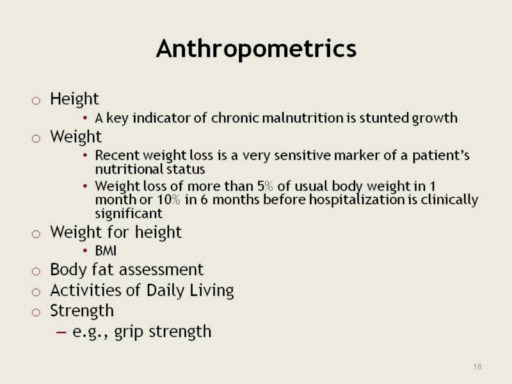| front |1 |2 |3 |4 |5 |6 |7 |8 |9 |10 |11 |12 |13 |14 |15 |16 |17 |18 |19 |20 |21 |22 |23 |24 |25 |26 |27 |28 |29 |30 |31 |32 |33 |34 |review |
 |
Anthropometrics is the scientific study of measurements of the human body.
When children are too short for their age group compared to the WHO child growth standards, they are considered growth-stunted.
Body Mass Index (BMI) is probably the most widely used measure of nutrition and health assessment. FAO WHO has country-specific BMI information available here: http://www.fao.org/ag/agn/nutrition/urban_assessment_en.stm
Country specific nutrition profiles (including standards of living, foods commonly consumed, major nutrition-related health problems, etc) can be found here: http://www.fao.org/ag/agn/nutrition/profiles_by_country_en.stm#
Midarm-muscle circumference known to be compatible with survival is between 900 and 1200mm2. A widely accepted definition of malnutrition is body mass index (BMI) less than 20 kg/m2 and midarm muscle circumference less than the fifteenth percentile. |